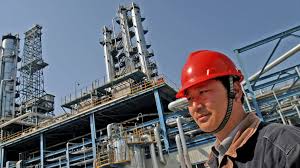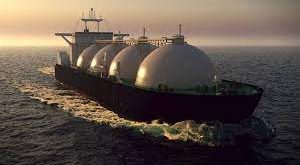Oil is now a buyer’s market and China is the world’s largest purchaser of crude. As prices have plunged to multi-decade lows, the country may be reaping geopolitical advantages, if not economic benefits. China relies on imports for more than 70 per cent of domestic consumption.
However, some commentators have claimed the lower prices pose a challenge for state-owned oil firms for their production and investment. They also argue that low prices don’t automatically mean cheaper fuel for consumers because of the domestic control of prices. They are not looking at the bigger picture.
Russia, Saudi Arabia and the United States are looking to China to help prop up their oil industries threatened by the recent price collapse. American oil producers want their government to pressure Beijing into buying more of their oil under the so-called phase one of the trade deal between the two countries. Meanwhile, China has been buying more oil from Russia and Saudi Arabia.
Futures contracts of West Texas Intermediate, one of the main gauges of oil prices, at one point plunged into negative territory before recovering. Prices have fallen about 70 per cent year on year.
Russia, oil producers’ cartel OPEC and its allies have just agreed to a truce in their Ill-advised price war, which triggered the market collapse. But the worldwide economic downturn due to the Covid-19 pandemic is the underlying cause.
The settlement was brokered by US President Donald Trump to end the price war and cut production. Washington desperately needs to put a floor under oil prices to keep many of its domestic producers from bankruptcy.
But the coming global recession is the real reason for the sudden drop in oil demand. There is not much the leaders of the three oil-producing countries can do about that.
That is also why they are turning to China as the most significant buyer. Alarmed by China’s increasing purchases of Saudi and Russian oil, US producers have been pressuring the Trump White House to refocus on its trade deal with Beijing. Under phase one, China is supposed to buy US$18.5 billion more in US energy products in the first year and another US$33.9 billion in the second year.
But because of China’s economic contraction, the worst since its opening in the late 1970s, even Trump and economic adviser Larry Kudlow have warned that Beijing may not be able to fulfill its pledges.
Given the dire situation of the energy industries in the three countries, it is hard not to see Beijing playing them off against each other. At the very least, China may demand a quid pro quo with the Americans to ease off on their hostile rhetoric over Covid-19 and treatment of Chinese hi-tech companies in the US. It would be foolish not to.

 Iran Energy News Oil, Gas, Petrochemical and Energy Field Specialized Channel
Iran Energy News Oil, Gas, Petrochemical and Energy Field Specialized Channel


